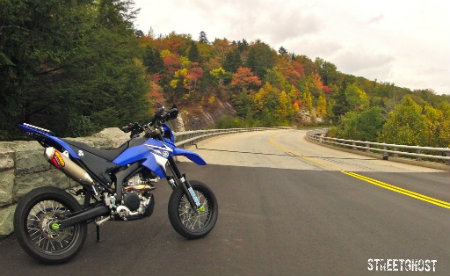I ran a 12/45 and then 12/47 sprockets on my WR-250R for something like 6,000 miles before I eventually sold the bike without so much as a worn-through chain slider (AKA seal guard on the Yamaha parts catalogues), never mind any swingarm damage.
I have always believed you see this on bikes with long-travel suspension where the drive chain is always adjusted too tightly with insufficient slack.
The WR-250R and X seem especially plagued by this since the swingarm pivot location is a bit lower than most bikes, and this bike is a popular candidate to be loaded-up with camping/adventure gear, compress the rear suspension, and have the too-tight chain grind through the chain slider.
As for riding exclusively in sand (or, where it is your main concern), I tend to favor the front ride height to be a bit higher than normal, and this can be achieved by simply dropping the fork tubes a few millimeters.
On bikes I've owned where the fork springs were boarderline soft even on firm ground, I'll install the next stiffer springs in order to raise the front and give me a good feeling with the front-to-rear balance of the bike.
This tends toward straight-line stability, something you want when riding soft sand all day long.
Sand tires are better in sand than tires meant for typical street/dirt use, too.
